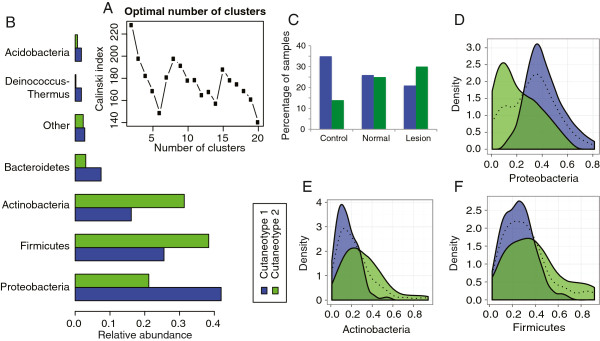Figure 4.

Evidence for psoriasis-associated cutaneotypes. (A) Clustering analysis of the Jensen-Shannon divergence distances indicated that two clusters, which we called cutaneotypes, can optimally describe the data. The Calinski-Harabasz index plot versus the number of clusters was used to select the optimal number of clusters, which also indicated that two has the highest Calinski index. (B) The relative abundance of major phyla is different between the two cutaneotypes. (C) The distribution of specimens in the three clinical categories is significantly associated with cutaneotype (P <0.01 based on χ2 test). Cutaneotype 2 is enriched for lesion specimens, while controls are more likely to be of cutaneotype 1 (OR 3.52, 95% CI 1.44 to 8.98), unaffected skin specimens are approximately evenly distributed between the cutaneotypes. Cutaneotype 1 is dominated by Proteobacteria(D). In the density plots, the dotted line shows the combined density for both cutaneotypes: blue, cutaneotype 1; green, cutaneotype 2. In cutaneotype 2, Actinobacteria(E) and Firmicutes(F) are the dominant phyla.
